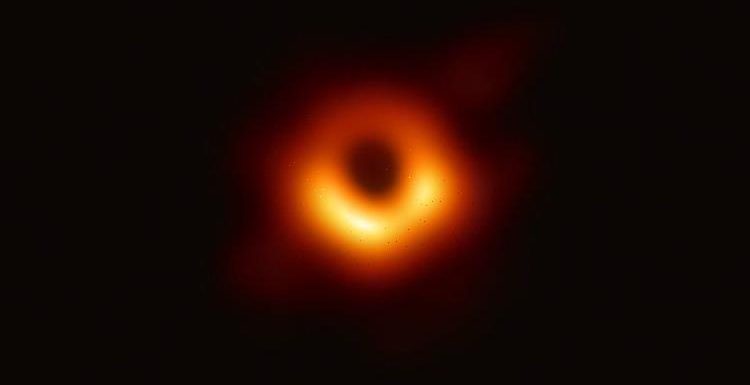
Jupiter's Ganymede moon can be heard from Juno spacecraft
We use your sign-up to provide content in ways you’ve consented to and to improve our understanding of you. This may include adverts from us and 3rd parties based on our understanding. You can unsubscribe at any time. More info
The new study reveals the most precise information we have so far on the mass of the enormous black hole that lies at the centre of our galaxy. Recent research has uncovered more about the ginormous black hole called Sagittarius A*or Sgr A* for short.
Using the European Southern Observatory’s Very Large Telescope, astronomers were able to observe the movements of stars near the black hole.
This allowed them to calculate how much of the mass at the centre of the galaxy is due to stars, smaller black holes, and other matter, and how much is due to the supermassive black hole itself.
One of the astronomers behind this research, Stefan Gillessen said: “With the 2020 Nobel prize in physics awarded for the confirmation that Sgr A* is indeed a black hole, we now want to go further.
“We would like to understand whether there is anything else hidden at the centre of the Milky Way and whether general relativity is indeed the correct theory of gravity in this extreme laboratory.


“The most straightforward way to answer that question is to closely follow the orbits of stars passing close to Sgr A*.”
Scientists have found that the Galactic Center of the Milky Way, located roughly 27,000 light-years from the Sun, contains the compact radio source Sgr A* that astronomers have identified as a supermassive black hole 4.3 million times as massive as the Sun.
The researchers also believe that in the future, they will be able to make more accurate predictions using more advanced telescopes such as the Giant Magellan Telescope and the Thirty Meter Telescope.
Gillessen concluded: “We will improve our sensitivity even further in future, allowing us to track even fainter objects”

“We hope to detect more than we see now, giving us a unique and unambiguous way to measure the rotation of the black hole.”
Black holes are among the most enigmatic stellar objects in the whole of the universe.
First predicted by Albert Einstein’s general theory of relativity in 1915, they exist as points in time and space where the collapse of a large star leads to matter being infinitely compressed into an infinitely small amount of space.
The resulting singularity breaks down all known laws of physics and anything, even light, that gets trapped in its gravity, is lost forever.
DON’T MISS
Solar storm warning: Two major solar flares to be fired from Sun [REVEAL]
Pompeii breakthrough as remains of ‘vaporised’ man found [REPORT]
Putin caves as EU checkmates Russia [INSIGHT]


In 2019, the Event Horizon Telescope (EHT) collaboration was able to capture the first image ever recorded of a black hole.
The EHT captured an image of the black hole in the centre of galaxy M87 while the telescope was studying the event horizon, which is the area near a black hole past which nothing can escape from.
Source: Read Full Article